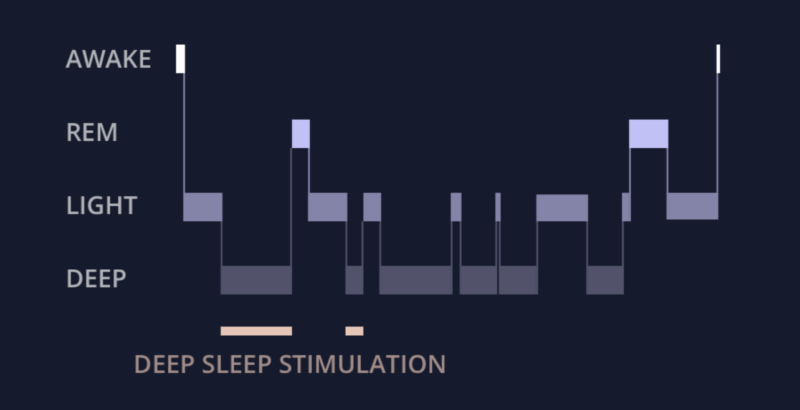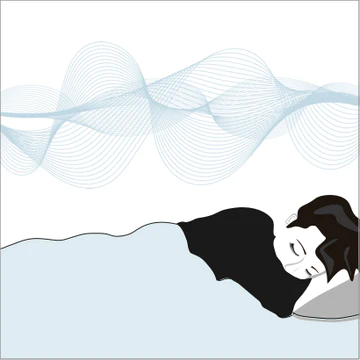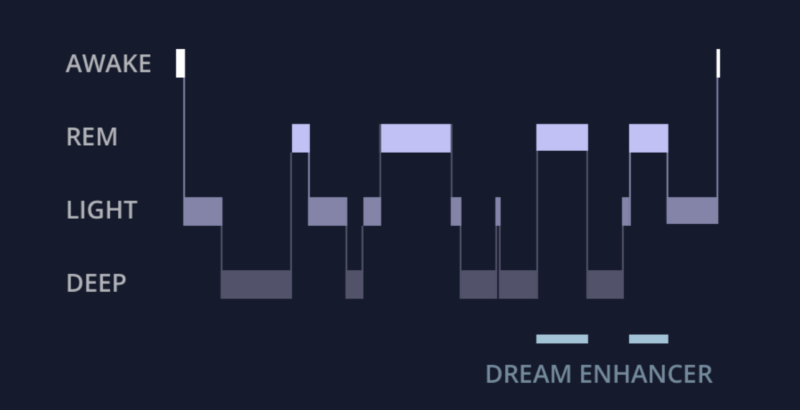Go beyond tracking and enhance your sleep with real-time interventions
Using sound, light, and vibration to make your sleep deeper and promote lucid dreaming
What is real-time sleep tracking?
Real-time sleep tracking makes it possible to enhance sleep based on the data connected from a wearable or nearable. SleepSpace is one of the only sleep trackers that measures sleep in real-time. But what exactly do we mean when we say real-time sleep tracking? Well, it turns out that most trackers (i.e. Oura and Whoop) measure sleep after the sleep occurs, when the user wakes up in the morning. As a result, most current trackers do not improve sleep, during sleep, based on a users sleep stage. These other trackers merely report back how you slept, without any ability to actually influence or improve your sleep. By measuring sleep every thirty seconds with an Apple Watch or the SleepSpace Smart Bed, SleepSpace technology can enhance your sleep in a number of ways. Additionally, the SleepSpace Smart Bed enables for the ability to play sounds more precisely, in order to enhance sleep without disrupting your sleep partner (see diagram below).

How SleepSpace’s real-time tracking improves sleep?
Since SleepSpace can accurately measure your sleep every 30 seconds, during sleep, we have developed a number of sound-based solutions for enhancing sleep and improving your sleep quality. These include a) Our Smart Sound machine, b) Deep Sleep Stimulation, c) Targeted Memory reactivation (similar to lucid dreaming).
SleepSpace’s Smart Sound Machine
Our innovative technology can more effectively block out noise pollution at night, a major cause of night-time awakenings. You might not be aware of this, but sounds, even an air-conditioner turning on, can cause your brain to wake up during the night without you having any awareness of this. But even though you are unaware of the disturbance, it doesn’t mean that this is not negatively impacting your sleep. SleepSpace more effectively blocks out noise pollution by gradually increasing the volume of our sound masking technology when we detect that you have sustained sleep, as defined by being in a sleep state for 5 minutes or more. We call this technology a smart sound machine.

Using real-time sleep tracking for deep sleep stimulation
Deep sleep stimulation is a new finding in sleep science where playing a frequency at the same rate as regenerative delta waves can increase these types of healthy brainwaves. Since SleepSpace can measure sleep in real-time we deliver this delta wave frequency when sustained sleep is detected during a period of time that you are likely to have deep sleep. In this way, it may be possible to entrain deeper sleep brainwaves. We published a paper on this approach in a laboratory study with our research collaborators at Penn State.
Using real-time sleep tracking for targeted memory reactivation
Another advantage of real-time sleep tracking is the game-changing possibility of impacting your dreams and subconscious processing of reality. It seems like something out of a science fiction movie, but in sleep science there is a term for this, called target memory reactivation. By detecting sleep in real-time and delivering precise sounds using any smart phone or the SleepSpace Smart Bed, we can detect when you are likely in a dream state. Then a sound that you previously have meditated to or focused on can occur when you are in this dream state, or REM. Using this strategy you can possibly influence your dreams, reduce nightmares, and improve your ability to remember things that you want to remember.
